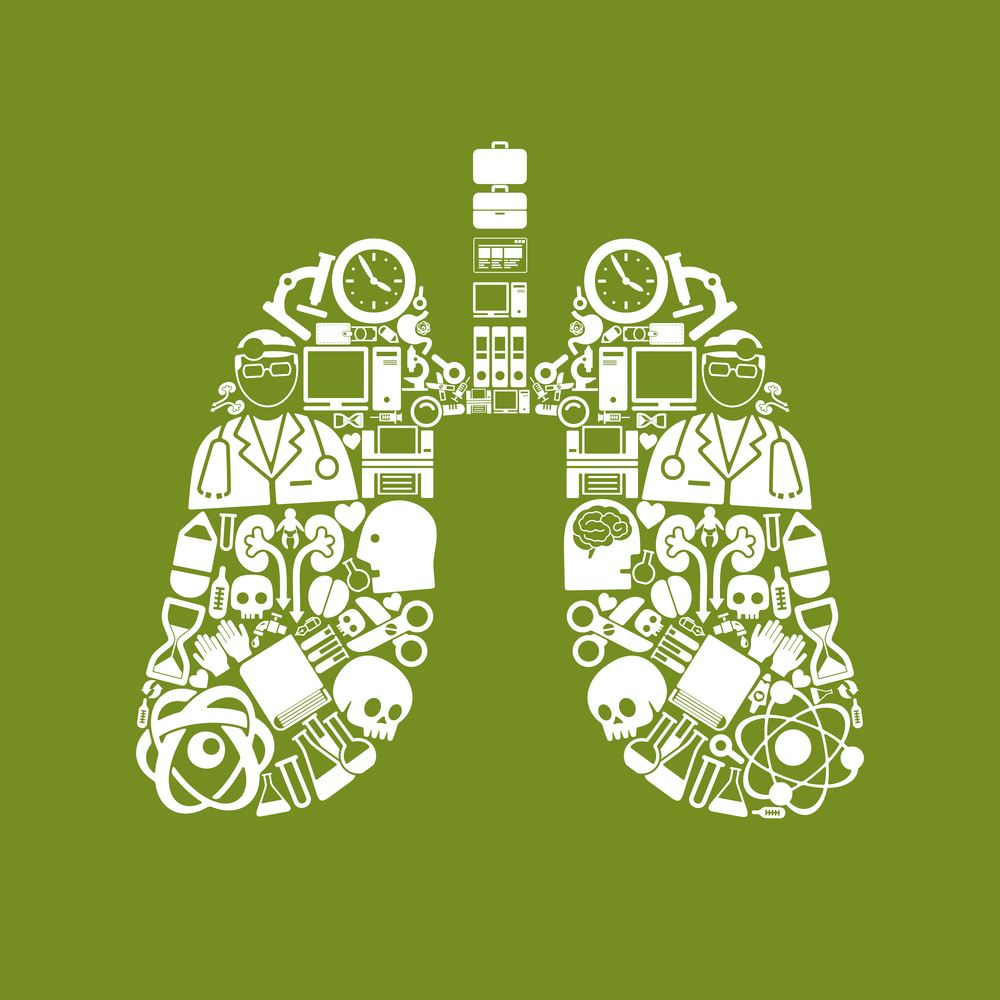A new study identified a mosaic pattern of lung attenuation on chest CT scans detected in some Pulmonary Hypertension patients, particularly those patients with CTEPH. The study, entitled “Mosaic Pattern of Lung Attenuation on Chest CT in Patients with Pulmonary Hypertension,” was published in the journal Diseases.
Researchers note that a number of possible etiologies could lead to the appearance of a mosaic pattern of lung attenuation (patchy areas with varying densities depicting both affected and non-affected parts of the lungs) on a chest Computed Tomography (CT) scan report. Though most commonly found in patients with pulmonary hypertension (PH), small airway, and infiltrative lung disease, the exact diagnostic group of the condition along with related pathogenesis is difficult to assess from these patterns. Mostly relative hypoattenuation and hyperattenuation from adjacent areas with disparate perfusion are linked to PH, but the exact subcategory can only be determined after taking into account certain hemodynamic parameters like demographics, severity of the PH, main pulmonary artery (PA) size, PA/aorta (PA/Ao) ratio, pulmonary function tests (PFT), and ventilation perfusion scan results.
Due to a lesser number of available resources to adjudge the same, a retrospective study was carried out by Kamonpun Ussavarungsi, Augustine S. Lee and Charles D. Burger at the department of Pulmonary and Critical Care Medicine, Mayo Clinic, Florida, among a total of 306 patients admitted to their PH center from January 1992 to December 2006. Data was collected on the basis of parameters like age, sex, body mass index, PH diagnosis group, modified New York Heart Association functional class, forced expiratory volume in 1 second/forced vital capacity ratio, total lung capacity, residual volume, ventilation/perfusion lung scan results, and hemodynamic data denoting whether the patients had RHC, including right arterial pressure (RAP), mean pulmonary arterial pressure (MPAP), pulmonary vascular resistance (PVR) and cardiac output (CO). 117 patients without RHC were excluded and Chest CT scans were performed on 189 patients who served as the study cohort.
After performing the necessary tests and statistical calculations, it was observed that more than half of the patients had Group 1 pulmonary arterial hypertension (PAH) with the second largest number of patients in Group 3 PH, according to standard classifications. Observing the mosaic patterns on chest CT scans showed that 17 of the 113 (15%) Group 1 PAH patients, 5 of the 18 (28%) Group 2 PVH, 8 of the 50 (16%) Group 3 PH and 4 of the 8 (50%) Group 4 chronic thromboembolic PH (CTEPH) recorded such patterns, denoting that patients with Group 4 CTEPH were more likely to have mosaic pattern compared with other groups.
However, the mere appearance of a mosaic pattern was not enough to clinically distinguish between different classes of PH among patients, though it had an increased prevalence among CTEPH patients (Group 4 PH). Hemodynamic parameters and demographic information needed to be assessed equally importantly to zero in on a near-to-perfect diagnosis, as suggested by the authors as a concluding note to their research.

